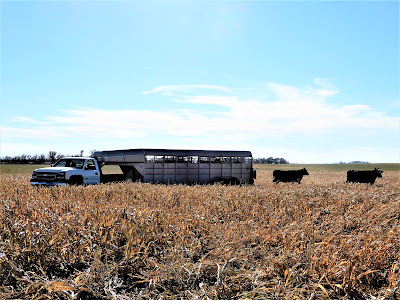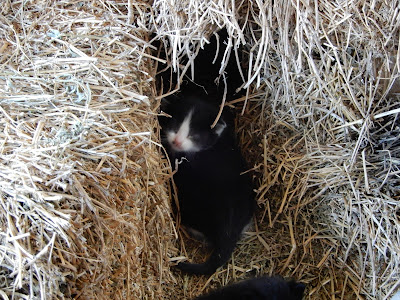And there it was: Coronavirus Vaccine.
No, Dr. Bruce didn't pirate a shipment of human coronavirus vaccine.
This was the bovine version. The entire label said "Bovine Rotovirus-Coronavirus Vaccine." Coronavirus in cattle causes diarrhea. Of course, that symptom appears on the ubiquitous internet Covid-19 charts for humans. (But let's get real: What symptoms aren't present on those charts?)
But this vaccine was administered to calves born last winter here on the County Line. The visit from Dr. Bruce was the cattleman's version of a "well-child check," during which the calves were vaccinated in a similar fashion as taking your infants to the pediatrician.
Early on in the pandemic, some enterprising(?) person posted a photo meme of a similar bottle. It suggested that news providers were being dishonest about the coronavirus being new, in order to cause alarm and make the public purchase protective equipment.
 |
| A coronavirus vaccine, you say? |
In truth, the bovine coronavirus, which has existed for years, is not the same as the new strain of coronavirus behind this year's global outbreak in humans. The strain of the human coronavirus causing our human world to change so dramatically is called SARS-CoV-2.
I couldn't find when the bovine vaccine was first available, but even back in a 2003 report, the bovine version was being used in cattle operations.
(It kind of looks like this calf could use a vaccine for its runny nose, but, hopefully, that got covered, too, in all the shots given to each calf and cow that went through the working chute.)
So, no, I don't have breaking news on the human vaccine front here on the Stafford/Reno County line in rural Kansas. But after three separate visits from Dr. Bruce, our cattle herd is protected with a vaccine for their version of coronavirus.
Dr. Bruce did go high-tech with some of the preg-checks he did on our cows. The fall visit from the vet includes Dr. Bruce determining whether or not our cows will deliver 80-pound "bundles of joy" this coming winter.
During one of the visits, Dr. Bruce was testing out an ultrasound machine for bovines. Normally, he uses a manual exam to determine whether or not the cow is pregnant and estimate how "far along" she is.
At one visit, he used his newfangled machine, which he was testing to see if he wanted to purchase it for his veterinary practice.
He knows I'm interested in seeing things for myself. (I wasn't the only one: Randy wanted to look at the screen, too.)
Unfortunately, I didn't discover until later that my photo attempt of the screen instead revealed my windswept profile.
 |
| Image from https://www.yourvet.co.nz |
And just like the human version, I need labels to explain what I'm looking at. But Dr. Bruce knows what he's doing. He would tell me how "far along" the mama cow was - usually between 4 to 6 months - and I'd write it down on the chart.
For a couple of cows, he thought the ultrasound was inconclusive, so he reverted to the tried-and-true palpation method. That particular day, the manual exam revealed that they were all pregnant: The fetuses were just in a position making it difficult to see on the ultrasound screen.
So why is determining pregnancy in our beef cattle a management tool for the County Line and other beef producers?
The identification of non-pregnant animals is essential if you wish to decrease numbers and remove these animals from your herd. We took the open (non-pregnant) cows to the Pratt sale barn. That way, we're not spending money to feed and care for cows who are not building our herd.
Having Dr. Bruce estimate how far along each mother is in her pregnancy is also important. For first-time mothers (heifers), we try to synchronize their reproductive cycles so that calving of this group happens in a "condensed" time. When it's calving time, we check the heifers much more frequently, since they are more likely to have difficulty during labor.
One of the cows wasn't bred during her first cycle, so she was only 2 months along, rather than the 4-6 months we'd expect. That may mean the cow would calve after we move cattle back to summer pasture. Many times, Randy also culls those cows from the herd, too, preferring to have all the mothers calve in a similar time frame.
After the vet visits, we hauled the pregnant cows to stalks, where they will graze this fall. We'll move them closer to home after they eat "the leftovers" and as they approach calving time.
While the mamas have to dine on their own, we provide meal delivery of "take out" to the feeder calves, the babies who were born last winter.
I hear meal delivery is a big thing during the pandemic.
Out here in the boondocks, that only works if you're bovine or feline.


















A very clever post, Kim. I don't know how you find the time.
ReplyDeleteWriting is part of who I am, I suppose.
Delete